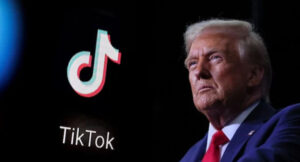Local video streaming platforms focussed on regional languages and niche target audiences are increasingly getting a substantial chunk of their revenue from overseas Indian viewers, in some cases up to 40%.
Not only do these users in countries including the US, the UK, Canada and Malaysia have the ability to pay for subscriptions, they also relate deeply to stories that resonate with their cultural identities.
Platform executives said Indian viewers overseas have a strong preference for deeply rooted narratives, especially those centred on rural life and cultural traditions, while older Bollywood and regional language classic movies also remain a big draw.
“Growing our international digital business is a critical part of our growth strategy, given the large Indian and South Asian diaspora across markets that are avid consumers of Indian content including Bollywood films,” a ZEE5 spokesperson said. “While content preferences among diaspora audiences largely mirror those in India, there’s a noticeable leaning toward culturally rooted narratives and nostalgic, family-centric content.”
Bollywood classics and regional blockbusters resonate deeply with this audience, alongside a growing demand for Indian language content, particularly Telugu and Tamil titles, followed by Malayalam and Bengali, the spokesperson said.
Pattern of engagement
ZEE5 has built a significant presence overseas including the US, the UK, the Middle East and North Africa, and key Asia-Pacific nations. Movies such as RRR, Gadar 2 and Sam Bahadur have emerged as big hits, while originals Despatch, Hisaab Baraber and Mrs. Sankranthiki Vasthunam (Telugu), Aindham Vedham (Tamil), Thiru Manickam (Tamil) and Identity (Malayalam) have been among the biggest non-Hindi titles.
“We’ve observed strong viewership spikes during weekends and local holidays, reflecting the diaspora’s engagement patterns,” the spokesperson said.
Strategic partnerships remain central to ZEE5’s global expansion and it is collaborating with telecom operators and smart TV providers to improve accessibility, the spokesperson said.
“Additionally, we are refining data-driven personalisation, AI-powered recommendations, and multi-device accessibility to elevate the user experience. With a focus on profitability, we are optimising our pricing and both our ad-supported and subscription-driven models,” the spokesperson added.
Diasporic audiences have a deep emotional connection with content that reflects their cultural roots, whether it’s Odia, Bengali, Tamil, or Hindi storytelling, said Kaushik Das, founder of AAO NXT, an Odia language OTT. Unlike Indian subscribers who have access to a vast content ecosystem, overseas viewers often actively seek content that reconnects them to home, Das pointed out.
“A lot of movies that don’t get a big release in international markets tend to do well for us. The potential is much higher than achieved now, and we are looking to diversify much of our slate for international audiences going forward, including producing Bangladeshi web shows and releasing all big theatrical Bengali movies on the platform,” said Soumya Mukherjee, chief operating officer of Bengali streaming service hoichoi.
Rajat Agrawal, chief operating officer of Ultra Media & Entertainment Group, said diasporic or overseas audiences for Indian OTT platforms prefer content that resonates with their cultural heritage, and they’re more likely to consume content in different languages, with subtitles or dubbing. He referred to the Middle East, the US, the UK and Southeast Asia as key markets.
“Overseas audiences also tend to have higher average revenue per user (ARPU) due to more robust digital payment ecosystems in their countries,” Agrawal pointed out.
To garner more viewership abroad, the company that owns three OTT platforms is looking at creating content that resonates with the experiences of overseas Indians, expanding dubbing and subtitling options, besides collaborating with international producers, studios, or platforms to co-create content.
Overseas promotions
Ultra Media plans to create content that caters to specific interests or niches, such as Bollywood music or Indian classical music, and is in discussions with social media influencers and content creators who are popular among overseas Indians to promote its platforms.
Going ahead, local streaming platforms intend to host offline events, screenings and activations in overseas markets to build brand awareness and engage audiences. Teams will also leverage data analytics to understand overseas audience preferences and tailor content and marketing strategies accordingly, executives said.
A spokesperson at STAGE, a platform that offers Haryanvi, Rajasthani and Bhojpuri content, said it recently launched its Bhojpuri segment for a market that extends across regions in India, Nepal, Fiji, Mauritius, and beyond.
Chaupal, a platform specialising in Punjabi, Haryanvi and Bhojpuri content, said its growth in overseas markets so far has been almost entirely organic, driven by strong community connections and word of mouth.
“We plan to actively engage foreign communities through a mix of offline and online initiatives. This includes community engagement programmes, strategic tie-ups with concerts, digital marketing pushes in key diaspora regions, and collaborations with restaurants and cultural hubs,” said Ujjwal Mahajan, co-founder of Chaupal. LiveMint









